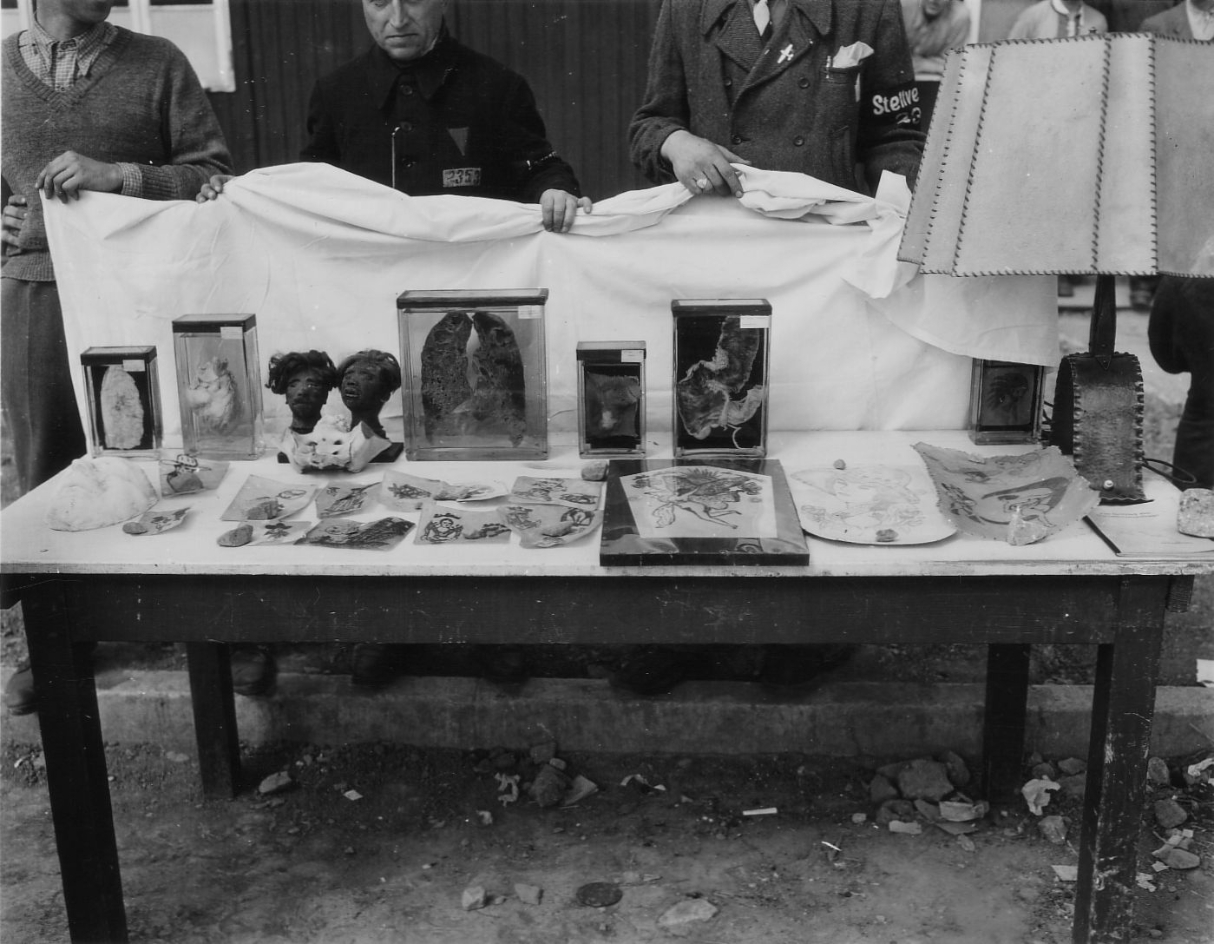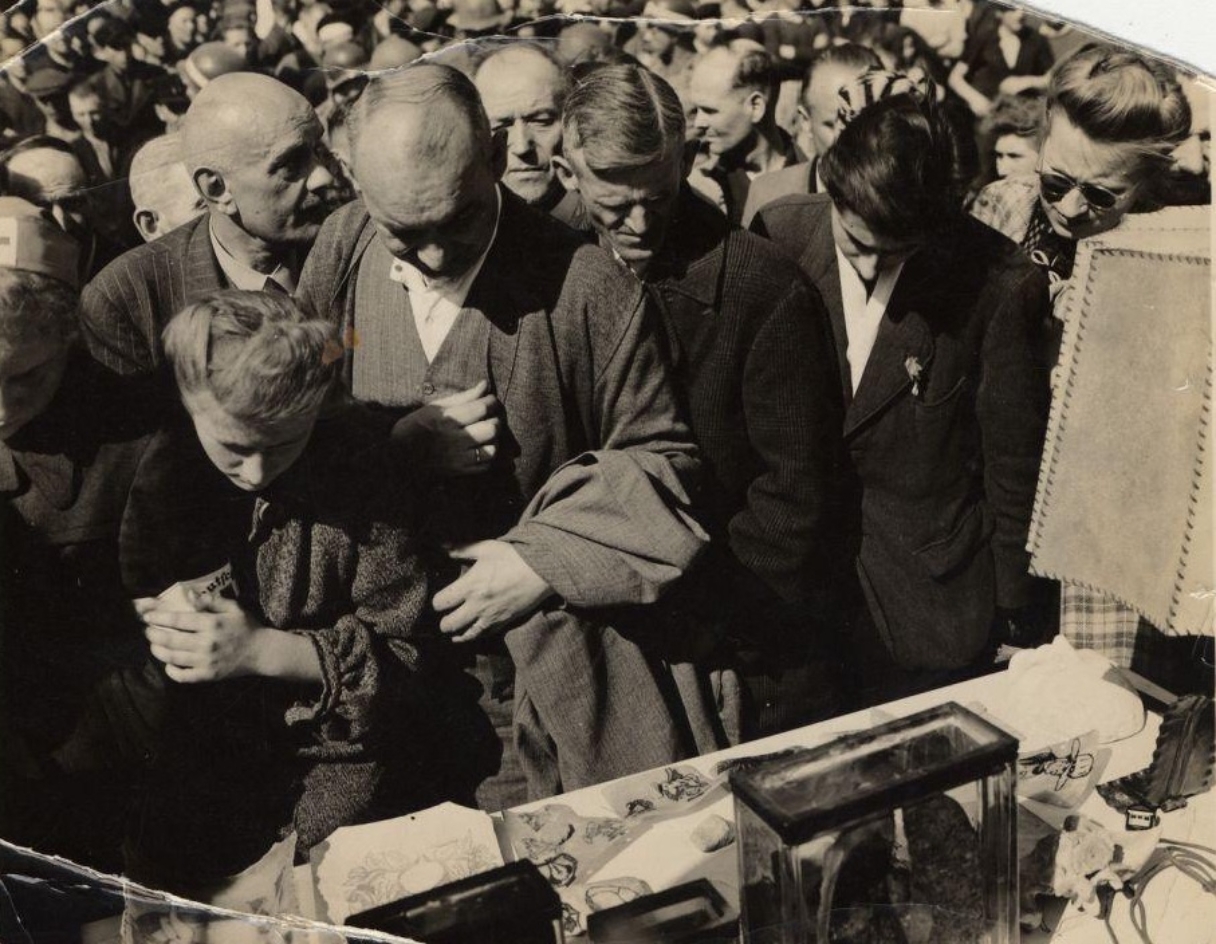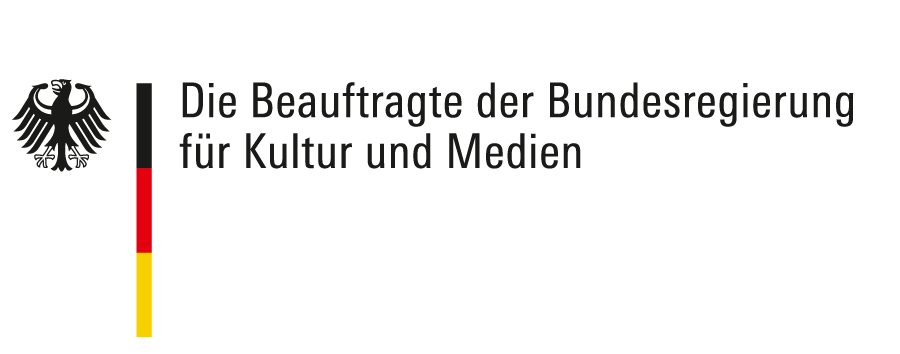
©National Archives Washington

©United States Holocaust Memorial Museum, Washington
Liberated prisoners had prepared this visit and set up a table in front of the pathology barracks (Block 2), which the Weimarer's tour passed, with pathology specimens that had been created by order of the SS during the camp. These included two shrunken heads, several wet specimens with organs and organ slices from deceased prisoners, numerous pieces of tattooed human skin and the desk lamp from the camp commandant's study.
The pictures of the table were publicised worldwide and the human remains were also shown to numerous delegations on site over the next few days. After 16 April, the preparations were secured as evidence by members of a U.S. Army "Crime Unit" and taken as evidence for planned trials against the perpetrators. On 25 May 1945, selected pieces of skin were examined for authenticity. The chief pathologist of the Seventh Medical Laboratory, APO 403, New York, Major Reuben Cares, came to the conclusion in his expert opinion on the authenticity of three pieces of tanned and tattooed human skin that "all three specimens are tattooed human skin"
The evidence was kept by various members of the U.S. Army. From 29 April 1945 this was Major Purry E. Thomsen, Infantry, 12th Army Group, from 15 October 1945 Lt. Colonel Ottmar Eichmann, Cav, from 1 December 1946 Alexander von Blumenthal, CWO, USA. On 15 January 1947, the objects were handed over to William D. Denson, War Department civilian Attorney, Chief Prosecutor for the Buchenwald Concentration Camp Case.
From 11 April to 14 August 1947, the Buchenwald main trial took place on the grounds of the former Dachau concentration camp against 31 people accused of war crimes in connection with the Buchenwald concentration camp and its subcamps. The evidence presented by the prosecution included the three pieces of tattooed skin already examined and one of the two shrunken heads.
After the end of the trial, these and other human remains seized in Buchenwald were stored at the Armed Forces Institute of Pathology, Washington D.C.. After its closure in 2005, the artefacts were handed over to the National Museum of Health and Medicine, Silver Spring/Maryland, where they are still kept today.
The second shrunken head found in the liberated Buchenwald concentration camp was presumably taken from the camp by a German political prisoner and given to the Berlin Central Committee of the Association of Victims of Nazi Persecution (VVN) at the end of the 1940s. From there it was loaned to the Museum of German History on 21 May 1952 together with the lampshade of a bedside lamp. It is now part of the collection of the German Historical Museum ("Deutsches Historisches Museum").

